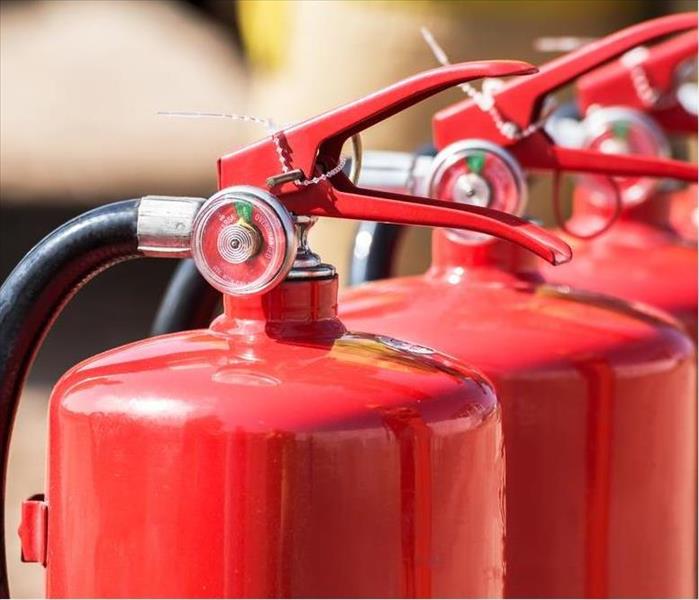The Best Fire-Extinguishing Method
12/28/2022 (Permalink)
The Best Fire-Extinguishing Method
Although fire extinguishers are designed to put out fires, it is important that you know how to use them effectively. Knowing which type of fire extinguisher will work best for your situation is also important. Below you will find the most common types of fire extinguishers, as well as instructions on how they can be used.
Know the Fire Type
While it’s easy to think of fire extinguishers as a catchall solution for all types of fires, they are actually only effective for certain types of fires. So knowing the type of fire you are dealing with is critical.
Fire Extinguisher Class A
Extinguisher Class A is used for ordinary combustibles, such as paper and wood. This is the most common type of fire extinguisher and can be found in a majority of homes.
Fire Extinguisher Class B
Extinguisher Class B is used for flammable liquids, such as gas or oil. It's important to know that you should never use water on this type of fire because it will spread the liquid further. Instead, use foam or dry chemical extinguishers designed specifically for class B fires.
Fire Extinguisher Class C
Extinguisher Class C is used for electrical fires (including fires caused by lightning strikes). This type of extinguisher contains a conductive material that makes it safe to use around electricity without shocking yourself when discharged onto an electrical source or wire that has shorted out due to an electrical malfunction or lightning strike nearby your home
Fire Extinguisher Class D
A D-class fire extinguisher is used on fires involving combustible metals, such as lithium, potassium, sodium, and magnesium. It also works on fires involving flammable metals like zinc and aluminum.
A common mistake that people make with these types of fires is trying to smother them with a blanket or similar object. This will only make the situation worse; covering the material can cause it to explode violently and propel shrapnel at you or others nearby. Instead of attempting to prevent oxygen from reaching your metal fire by cutting off its air supply (which doesn't really work anyway), spray it down with an appropriate amount of water using a hose or bucket until all visible flames have been extinguished. Once you've killed off the flames in your metal fire's immediate vicinity, check for any embers still burning before leaving; if there are any leftovers they can reignite once exposed again so stay vigilant!
Fire Extinguisher Class K
Class K fire extinguishers are designed for use on grease fires. They should not be used on electrical fires or burning liquids. The best way to put out a kitchen grease fire is by smothering it with baking soda and water, which you can find in the cabinet above your stove.
If you are ever faced with a fire, having the right tools to extinguish it is important for your safety. You should know how to use a fire extinguisher correctly.
A fire can be caused by many things: electrical issues, smoking materials, and kitchen accidents are just some examples of ways that a fire starts. When you see smoke or notice flames in the home, keep calm and assess the situation. If there’s an exit nearby, get out immediately while calling 911 from a safe distance away from the house. If there isn't an exit nearby, make sure everyone knows what they're supposed to do if there's an emergency (i.e., get low on their hands so as not to cause burns when crawling under furniture).
If your home catches on fire, regardless of the reason, SERVPRO of Scarsdale/Mount Vernon can help restore your Scarsdale property to its original, preloss condition. Give us a call!

 24/7 Emergency Service
24/7 Emergency Service
